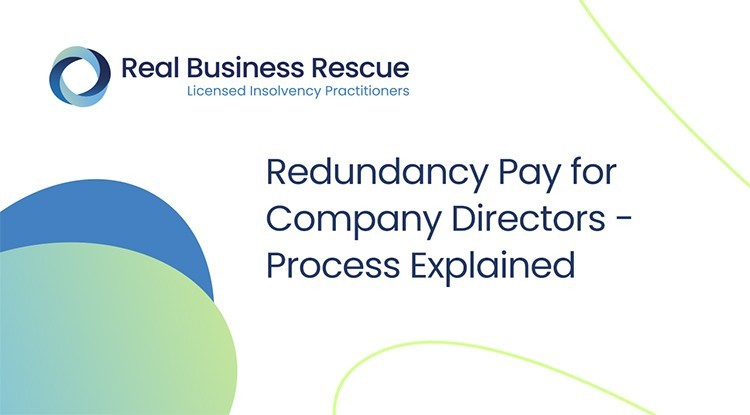Your Rights to Redundancy If Company Goes Bust: UK Employee Protections
Your Rights to Redundancy If Company Goes Bust: UK Employee Protections
Blog Article
Investigating the Interplay In Between Firm Redundancy and Business Adaptability for Future Growth
In the dynamic landscape of today's service world, the detailed partnership between business redundancy and organizational versatility arises as an essential element for sustained growth and success. Firms often deal with the obstacle of striking a delicate equilibrium in between maintaining a degree of redundancy to reduce threats and cultivating flexibility to react quickly to the ever-evolving market demands. This fragile interplay holds the essential to not just making it through in unstable times yet also growing when faced with uncertainty. As we discover the multifaceted measurements of this interaction, fascinating understandings right into how organizations navigate these complexities to lead the method for future growth await.
Value of Company Redundancy
Company redundancy is a critical component that boosts business resilience and reduces operational threats. By integrating redundancy steps within the business structure, business can much better stand up to unforeseen interruptions and variations in business environment. Redundancy serves as a critical barrier, allowing firms to adjust and respond successfully to unanticipated challenges without jeopardizing necessary procedures.
One key element of the significance of firm redundancy is its function in making certain continuity during times of dilemma. When encountered with sudden changes or emergencies, repetitive systems, sources, or workers can step in to preserve essential functions and avoid extensive interruptions. This connection not only safeguards the business's credibility and customer trust fund but also decreases financial losses and operational downtime.

Techniques for Business Adaptability

Creating adaptable business structures that enable for quick changes to market characteristics and consumer demands is important for remaining competitive in a rapidly advancing setting. By proactively recognizing prospective interruptions and possibilities, organizations can proactively adjust and prosper in an ever-changing service landscape.
Balancing Redundancy and Flexibility
Accomplishing an unified stability between operational redundancy and organizational versatility is paramount in browsing the complexities of a dynamic company environment. Redundancy within a business provides a security internet, ensuring continuity and stability in procedures. Nonetheless, an excess of redundancy can lead to ineffectiveness and prevent adaptability to transforming market conditions. On the various other hand, organizational versatility enables companies to respond promptly more information to outside interruptions and confiscate new possibilities. Striking the ideal equilibrium in between redundancy and flexibility is a delicate process that needs a deep understanding of the company's objectives, market characteristics, and danger resistance.
To accomplish this equilibrium, business require to perform regular assessments of their procedures to identify locations where redundancy is required for danger mitigation and where adaptability can drive development and development. Applying flexible structures, promoting a society of continual knowing and enhancement, and urging open interaction throughout all levels of the organization are key strategies to balance redundancy and adaptability effectively. By aligning these two critical components, business can position themselves for sustainable development and success in an ever-changing organization landscape.
Case Studies on Adjustment Success
In examining instances of successful business adaptation, it ends up being obvious that the interaction between operational redundancy and versatility is a defining consider forming resistant businesses. One engaging instance research study is that of Netflix. At first a DVD rental solution, Netflix showed impressive go to these guys flexibility by transitioning right into a streaming platform when digitalization disrupted the industry. By tactically investing in modern technology and material creation, Netflix not just prospered yet survived in a rapidly progressing market. An additional standout instance is Amazon. Starting as an on-line book shop, Amazon continually adjusted its company version, increasing right into diverse sectors such as cloud computing and fabricated intelligence. This adaptability allowed Amazon to stay ahead of competitors and satisfy transforming consumer demands. Finally, Adobe offers a notable picture of effective adaptation. The company changed from offering software program licenses to a subscription-based model, making certain persisting revenue streams and improved client engagement. These study highlight the significance of operational redundancy combined with organizational adaptability in fostering lasting growth and competitiveness.
Structure Strength for Future Development
Structure durability for future growth needs a calculated positioning of operational processes with market dynamics and arising fads. Firms must adjust to transforming settings by cultivating a society of versatility, development, and continuous improvement. Strength entails not just bouncing back from problems however also proactively planning for future obstacles. One crucial element of building strength is spending in robust threat monitoring methods to reduce prospective disruptions. This includes circumstance planning, diversifying supply chains, and creating contingency prepare for different contingencies (who pays redundancy money). read this
Furthermore, cultivating strong partnerships with stakeholders, such as customers, staff members, providers, and the area, is necessary for maintaining and weathering uncertainties trust and support throughout rough times. Reliable communication and openness play a vital function in structure resilience, as they assist straighten assumptions and help with collaboration in navigating unpredictabilities.
Additionally, organizations need to focus on understanding and advancement campaigns to upskill employees and equip them with the necessary tools to adapt to altering conditions. By buying their workforce, business can improve their flexibility and dexterity, ultimately enhancing their durability for lasting future development.
Conclusion

In the vibrant landscape of today's business globe, the complex relationship in between company redundancy and organizational flexibility emerges as a vital element for continual development and success. Companies commonly face the difficulty of striking a fragile balance between maintaining a level of redundancy to alleviate threats and fostering versatility to react promptly to the ever-evolving market demands.To accomplish this equilibrium, firms need to conduct routine analyses of their operations to identify locations where redundancy is essential for risk reduction and where adaptability can drive innovation and development.In verdict, the interplay in between business redundancy and business adaptability is vital for future development. Structure durability via a combination of redundancy and adaptability will guarantee that business are prepared for the challenges of the future.
Report this page